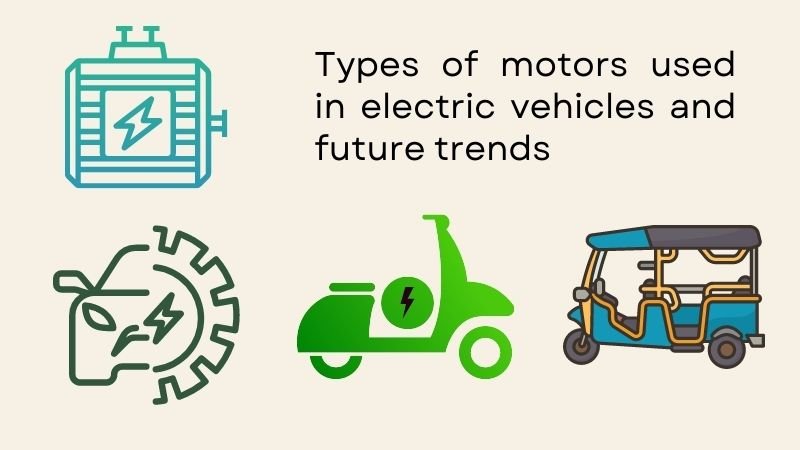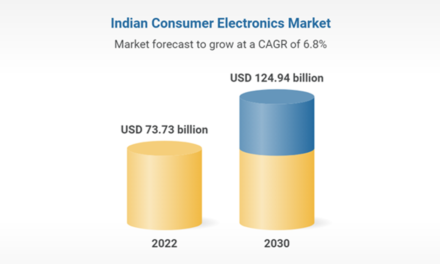The future trends in electric motors are being shaped by advances in technology, energy efficiency demands, and the need for sustainable solutions in various industries. Here are the key trends expected to impact the development and application of electric motors:
1. Energy Efficiency and Sustainability
- Increased Efficiency: Electric motors are increasingly designed to be more energy-efficient to reduce electricity consumption and lower operational costs. Future motors will likely use advanced materials and design techniques to achieve higher efficiency levels, particularly in industries like manufacturing, transportation, and HVAC systems.
- Sustainable Materials: As industries focus more on sustainability, the use of eco-friendly and recyclable materials in electric motor components (such as magnets and insulation) will increase. These materials will reduce the environmental impact of manufacturing and disposal.
2. Integration with Renewable Energy Systems
- Renewable Power Generation: Electric motors will be key components in renewable energy systems, such as wind turbines and solar power plants, where they are used to generate, store, and distribute power efficiently. The trend towards renewable energy integration will drive the demand for motors that work seamlessly with green technologies.
- Energy Storage: Electric motors will play a crucial role in battery storage systems for renewable energy, converting and distributing stored energy for use when renewable sources are not available, such as in electric vehicles (EVs) and grid storage solutions.
3. Advanced Motor Control Technologies
- Smart Motors: The integration of sensor technologies and IoT (Internet of Things) capabilities in electric motors will lead to “smart” motors that can autonomously adjust their performance based on load, temperature, and other environmental factors. These motors will enable real-time monitoring and diagnostics, improving maintenance and extending motor life.
- Variable Speed Drives (VSDs): VSDs, which adjust the speed of motors to match the demand, will become more common in industrial settings to optimize energy usage and reduce wear on motor components. The future of electric motor control will focus on providing more precise control with energy-saving benefits.
4. Electric Motors in Transportation
- Electric Vehicles (EVs): The demand for electric motors in electric cars, electric trucks, and electric buses will continue to grow as the global automotive industry shifts away from fossil fuels. Future EV motors will aim to be lighter, more efficient, and capable of providing higher torque while consuming less energy.
- Aerospace: Electric motors are expected to play a significant role in electric aircraft, particularly in urban air mobility (UAM) solutions such as eVTOLs (electric Vertical Takeoff and Landing), with designs focused on high power density and efficiency to reduce weight and increase flight range.
5. Miniaturization and Power Density
- Smaller, More Powerful Motors: The trend of miniaturization is pushing the development of high-power-density motors. These motors are compact but powerful, making them ideal for applications where space is limited, such as in robotics, drones, and portable devices.
- High-Speed Motors: As miniaturization continues, the demand for high-speed, low-weight motors in various applications like precision instruments and robotics is on the rise. These motors will need to operate efficiently at higher rotational speeds without sacrificing reliability or longevity.
6. Automation and Robotics
- Robotics: The growing use of electric motors in industrial automation and robotics will continue, with more sophisticated motor designs needed for precise control, torque, and speed management. Motors for robotic arms, autonomous vehicles, and automated warehouses will require high efficiency, compact size, and long operational lifespans.
- Collaborative Robots (Cobots): Cobots, which work alongside human operators, will increasingly use electric motors with adaptive control features to improve flexibility, safety, and ease of integration into production environments.
7. Wireless Power and Inductive Motors
- Wireless Charging for Motors: Wireless power transmission technologies will make it possible to charge electric motors without the need for physical wiring. This trend could be applied to applications like electric vehicles or industrial robots, where the ability to charge or power motors without physical connectors could increase convenience and reduce wear on components.
- Inductive Motors: The future of inductive motors, which use magnetic fields for power transfer, could see more widespread adoption, particularly in applications requiring contactless power delivery or where traditional wired connections are impractical.
8. Artificial Intelligence and Machine Learning Integration
- Predictive Maintenance: The integration of AI and machine learning into electric motor systems will enable predictive maintenance capabilities. Motors will be equipped with sensors and software to monitor their health and predict failures before they occur, reducing downtime and repair costs.
- Optimization Algorithms: AI algorithms will optimize motor performance in real-time, making adjustments to improve energy consumption and adapt to changing load conditions in industrial processes, HVAC systems, and other applications.
9. Development of Alternative Motor Technologies
- Axial Flux Motors: As an alternative to traditional radial flux motors, axial flux motors are gaining attention due to their potential for higher power density and efficiency. These motors could revolutionize industries like electric vehicles and drones, where size and weight are critical factors.
- Linear Motors: Linear motors, which produce direct linear motion instead of rotational motion, are becoming more prominent in high-precision applications such as magnetic levitation trains and high-speed assembly lines.
10. Autonomous and Wireless Systems
- Self-Driving Cars: The use of electric motors in autonomous vehicles (AVs) will continue to rise, with innovations in drive systems that are more compact, efficient, and seamlessly integrated with automation technologies.
- Wireless Control: Wireless technology for motor control and monitoring will become more prevalent, especially in environments where wiring is impractical or costly.
Conclusion:
The future of electric motors is closely tied to advancements in efficiency, automation, and integration with renewable energy systems. As industries demand more sustainable, compact, and high-performance solutions, electric motor designs will evolve to meet these needs. With ongoing innovation in materials, control systems, and technologies like AI and IoT, electric motors will become smarter, more efficient, and more versatile, powering a wide range of applications in transportation, industry, robotics, and beyond.
Hashtags
#EnergyEfficientElectricMotors #HighPerformanceMotors #MotorEfficiencyAdvancements #LowEnergyConsumptionMotors #NextGenElectricMotors #EcoFriendlyMotors #SmartElectricMotors #IoTEnabledMotors #ConnectedMotorSystems #SmartMotorsForIndustries #MotorAutomationAndControl #IntelligentMotorTechnology #AdvancedMotorDesign #LightweightElectricMotors #NewMaterialsInMotors #MagneticMaterialsInnovation #HighStrengthMotors #RecyclableMotorMaterials #EVMotorTechnology #ElectricVehicleMotors #ElectricMotorsForCars #EVPowertrainInnovation #ElectricMotorsInTransportation #EVMotorEfficiency #MotorsForRenewableEnergy














